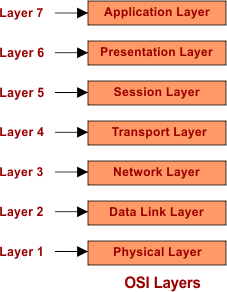Networking Models
There are two main networking models that are available to communicate with different devices over the internet.
Keep in mind OSI and TCP/IP are two different models built in almost the same period, and their functionality is almost similar.
1. OSI Model
The OSI (Open System Interconnection) is a Theoretical (or Reference) Model that holds seven layers, as given below.

- This Model is not practically implemented anywhere in the world because It defines just rules.
- This model defines the way through which two devices can communicate easily over the internet. That’s why the hardware manufacturers and software developers produce the hardware and software according to the OSI layered model.
2. TCP/IP Model
TCP/IP is a practical model; in functionality, it is just like the OSI model. In mostly books, TCP/IP holds 5 layers, and in some syllabus, it holds 4 layers. The reason behind the 4 or 5 layers is explained in the TCP/IP tutorial.

This model is a combination of TCP and IP. The TCP is implemented on the transport layer, and IP is implemented at the network layer.
Differences Between OSI & TCP/IP Model
| OSI Model | TCP/IP Model |
| The OSI proposal model was first defined in raw form in Washington, DC, in 1978, but later, it was published by the (International Organization for Standardization (ISO) in 1980. | In the late 1970s, TCP/IP was developed by The Defense Data Network (DDA), part of the Department of Defense, for its Advanced Research Projects Agency Network (ARPANET). |
| It is just a theoretical (referenced) model. | It is a practical model. |
| The structure of the OSI model was developed first, and then the protocols in each layer were developed. | In the TCP/IP, the protocols were developed first, and then the model was developed. |
| The OSI has seven layers. | TCP/IP has four or five layers in different books. This is because TCP/IP is not a theoretical Model. |













